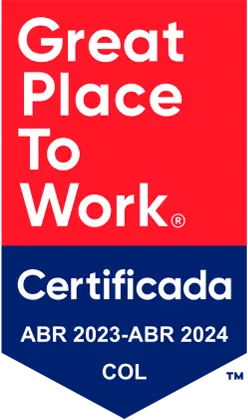En el vertiginoso mundo empresarial actual, la adaptabilidad y la eficiencia son esenciales. La arquitectura componible surge como un componente clave para el éxito empresarial, brindando flexibilidad y agilidad para navegar por un entorno en constante cambio. Hoy en ITSense te invitamos a de qué se trata esta arquitectura y cómo puede impulsar el crecimiento y la innovación en las empresas.
¿Qué es la Arquitectura Componible?
La arquitectura componible es un enfoque estratégico que utiliza tecnologías ágiles, como las API (Interfaz de Programación de Aplicaciones), para crear una infraestructura flexible y modular. Se basa en el concepto de «empresas componibles» definido por Gartner, donde las organizaciones ensamblan y combinan capacidades empresariales empaquetadas (PCB) para lograr resultados empresariales.

10 Claves para el Éxito Empresarial con Arquitectura Componible:
Flexibilidad Empresarial:
La arquitectura componible proporciona una estructura flexible que permite a las empresas adaptarse rápidamente a cambios en el mercado, regulaciones y tecnologías emergentes.
Ejemplo: Una empresa de comercio electrónico implementa la arquitectura componible para ajustar rápidamente su plataforma en respuesta a cambios estacionales en la demanda, optimizando la experiencia del cliente y maximizando las ventas.
Agilidad en el Desarrollo:
Facilita la construcción, prueba e implementación rápidas de soluciones empresariales, reduciendo el tiempo de comercialización y permitiendo una respuesta ágil a las oportunidades.
Ejemplo: Un proveedor de servicios financieros utiliza la arquitectura componible para desarrollar y lanzar rápidamente una aplicación móvil de banca, respondiendo ágilmente a las expectativas cambiantes de los usuarios.
Integración de Sistemas:
Utiliza conectores de integración (API) para conectar y coordinar sistemas dispares dentro de una empresa, rompiendo los silos y mejorando la eficiencia operativa.
Ejemplo: Una cadena de suministro adopta la arquitectura componible para integrar sin esfuerzo sus sistemas de inventario, logística y ventas, logrando una visión holística y mejorando la eficiencia operativa.
Escalabilidad Dinámica:
Permite escalar recursos según sea necesario, asegurando que las empresas puedan gestionar el crecimiento sin comprometer la estabilidad.
Ejemplo: Una empresa de servicios en la nube utiliza la arquitectura componible para escalar automáticamente los recursos según la demanda del cliente, garantizando un rendimiento óptimo en todo momento.
Eficiencia Operativa:
Elimina redundancias y mejora la eficiencia operativa al proporcionar una única arquitectura utilizada en toda la organización.
Ejemplo: Una compañía de telecomunicaciones simplifica sus operaciones consolidando sus sistemas de facturación, atención al cliente y redes utilizando la arquitectura componible.
Empoderamiento de Usuarios:
Facilita el empoderamiento de los usuarios empresariales y técnicos, permitiéndoles utilizar recursos de manera efectiva y contribuir a la innovación.
Ejemplo: Una empresa de fabricación implementa herramientas de BPM (Gestión de Procesos Empresariales) basadas en arquitectura componible, permitiendo a los equipos de producción ajustar los flujos de trabajo según sea necesario.
Adaptabilidad a Cambios Empresariales:
Ofrece la capacidad de reorganizar y reconfigurar rápidamente capacidades empresariales para adaptarse a cambios en la estrategia o el entorno empresarial.
Ejemplo: Una empresa de software ajusta fácilmente sus estrategias de mercado y funciones de producto al reorganizar componentes empresariales con arquitectura componible.
Reducción de Costos:
Contribuye a la reducción de costos operativos al mejorar la eficiencia y permitir un uso más efectivo de los recursos disponibles.
Ejemplo: Una institución educativa reduce costos consolidando sus sistemas administrativos y académicos a través de una arquitectura componible eficiente.
Innovación Continua:
Fomenta la innovación al permitir la fácil incorporación de nuevas capacidades y tecnologías en la infraestructura existente.
Ejemplo: Una empresa de tecnología adopta la arquitectura componible para integrar de manera fluida nuevas características y capacidades en sus productos, manteniéndose a la vanguardia de la innovación.
Competitividad en el Mercado:
Las empresas que adoptan la arquitectura componible están mejor posicionadas para mantenerse competitivas, adaptarse rápidamente y ofrecer soluciones eficientes.
Ejemplo: Una empresa de servicios profesionales mejora su competitividad al adaptarse rápidamente a las demandas del mercado, aprovechando la agilidad de la arquitectura componible.
En resumen, la arquitectura componible emerge como un motor de éxito empresarial en la era digital. Su capacidad para adaptarse, integrar y potenciar la innovación asegura que las empresas no solo sobrevivan, sino que prosperen en un mundo empresarial en constante evolución. Adoptar esta arquitectura puede marcar la diferencia entre seguir el ritmo del cambio o liderar la transformación empresarial.
¿Si te quedaron dudas sobre este concepto? Te invitamos a ponerte en contacto con nuestros expertos ITSense.



